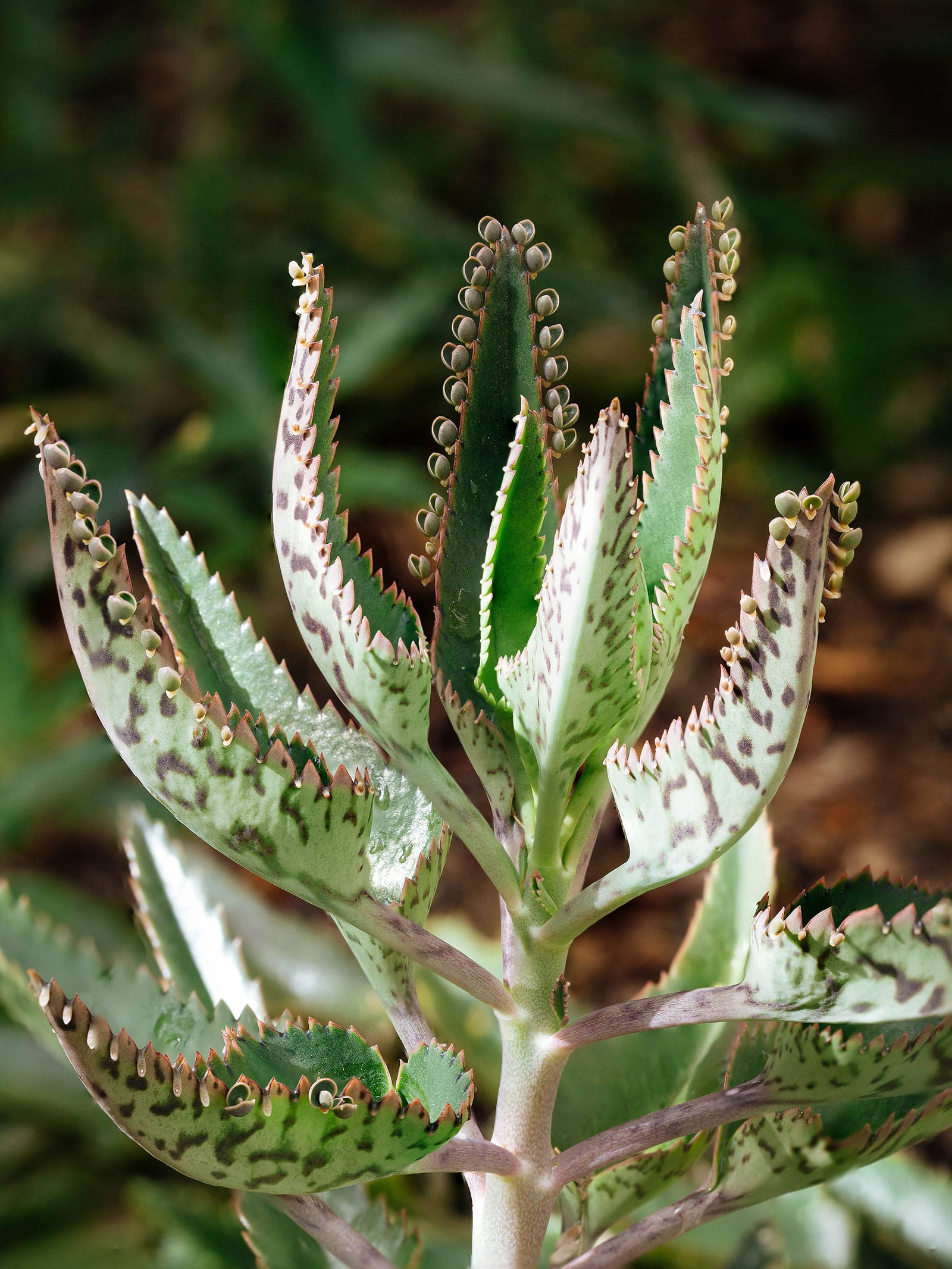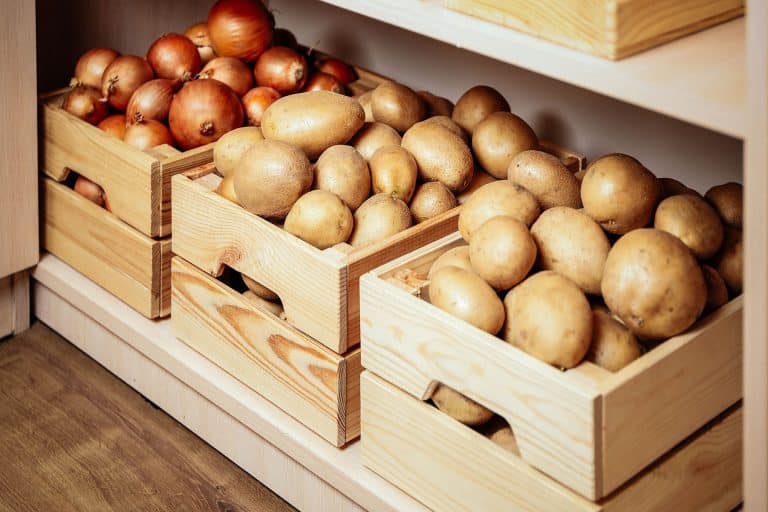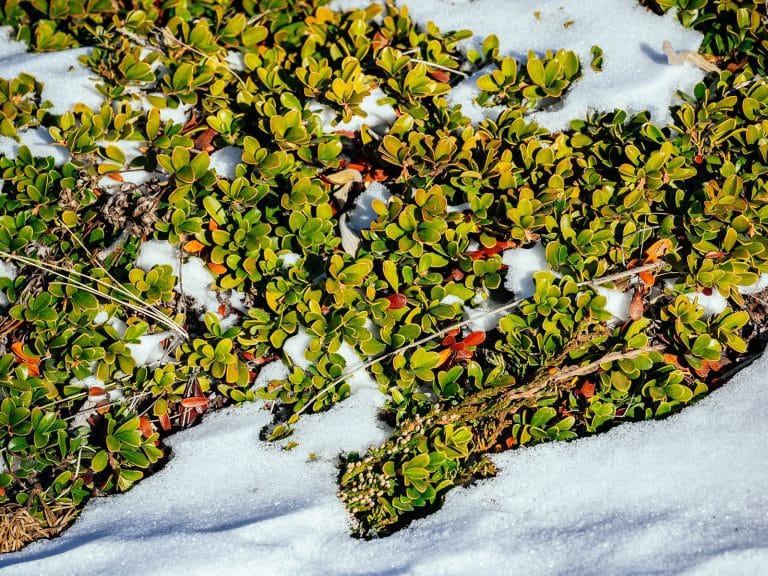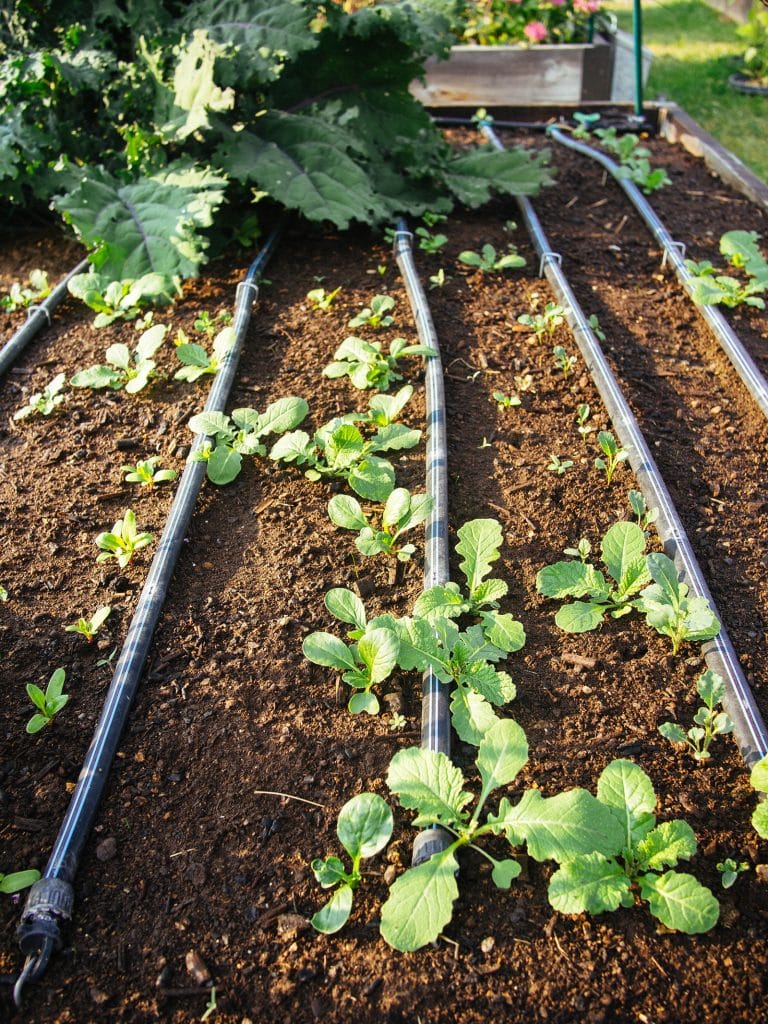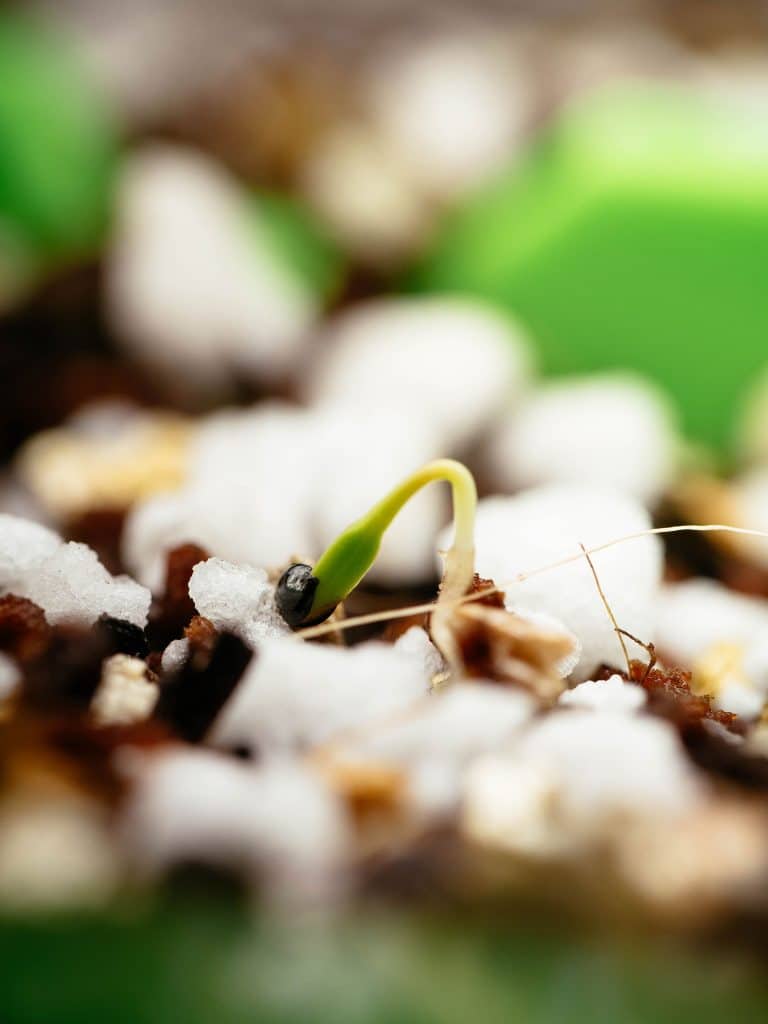I love a cool-looking succulent, and this is a species that’s both highly unusual and easy to care for: Kalanchoe daigremontiana, also called the mother of thousands plant. Known for its unique ability to produce baby plants on its leaves, this is a great choice for beginners as well as experienced succulent growers.
Let’s have a look at everything you need to know to grow a happy mother of thousands plant indoors or outside!
| Common name(s) | Mother of thousands, Mexican hat plant, alligator plant, devil’s backbone* |
| Scientific name | Kalanchoe daigremontiana (formerly Bryophyllum daigremontianum) |
| Family | Crassulaceae |
| Height and spread | Up to 3 feet tall and 1 foot wide |
| Light | Direct sun |
| Soil type | Succulent soil |
| Water | When soil is fully dry |
* This name is also used for an unrelated plant in the genus Euphorbia, so I won’t be using it here to avoid confusion.
Disclosure: If you shop from my article or make a purchase through one of my links, I may receive commissions on some of the products I recommend.
About the mother of thousands plant
Description
There are plenty of very strange species to be found among the world’s succulents, but this one really takes the cake. The mother of thousands plant, like some other members of the genus Kalanchoe, has the rare ability to reproduce asexually by producing baby plants on the edges of its leaves.
What?!
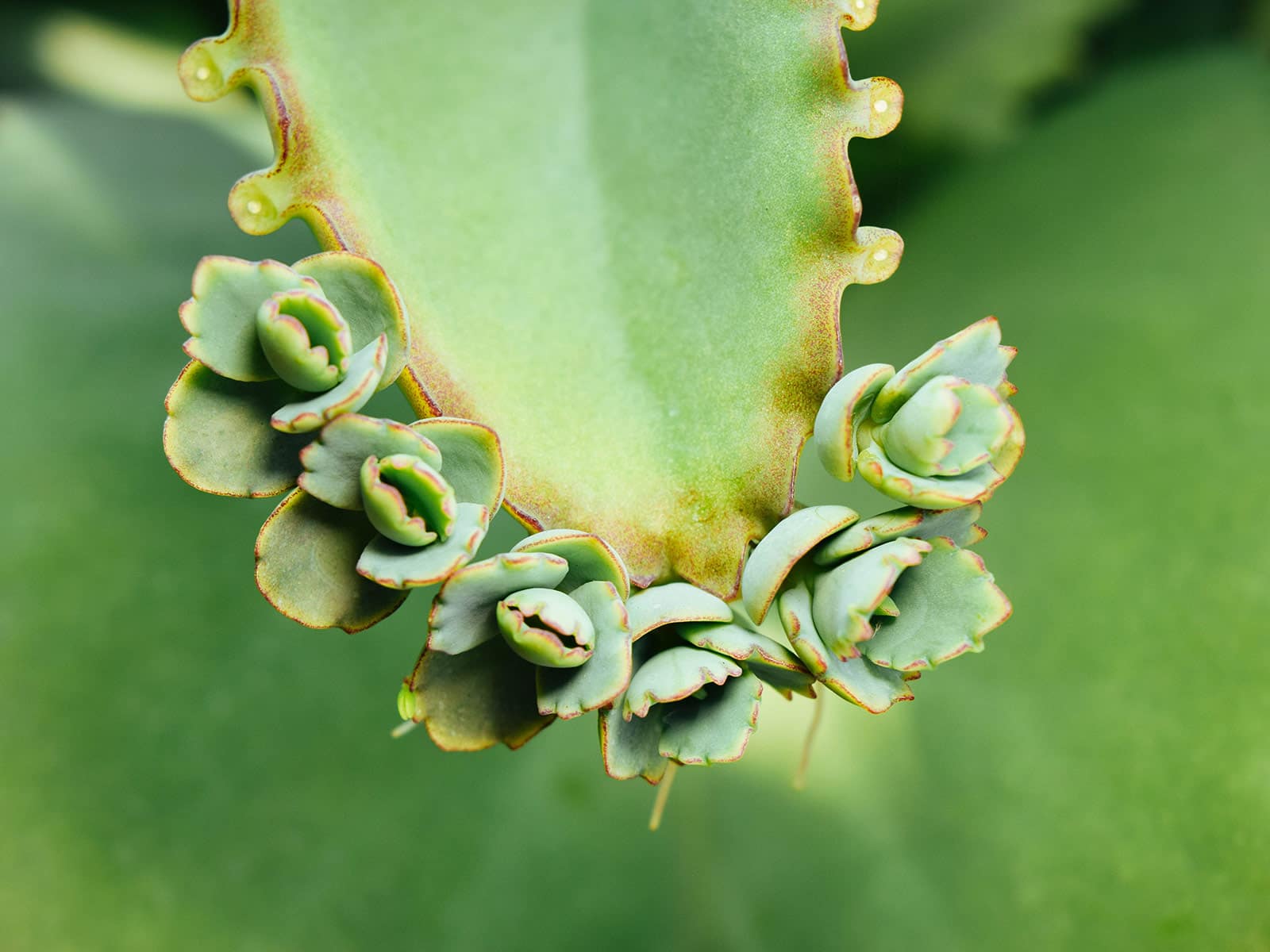
Called vivipary (embryos developing before they detach from the parent), this production of fully developed plantlets on the mother plant makes it easy for the species to spread. Once the babies are ready, they simply drop to the ground and continue growing independently.
The true mother of thousands plant, K. daigremontiana, looks pretty similar to a few of its cousins in the genus Kalanchoe. Still, it’s not too hard to identify once you know what to look for. This is a succulent with elongated fleshy green leaves featuring a dark reddish to brown striped pattern on the bottom.
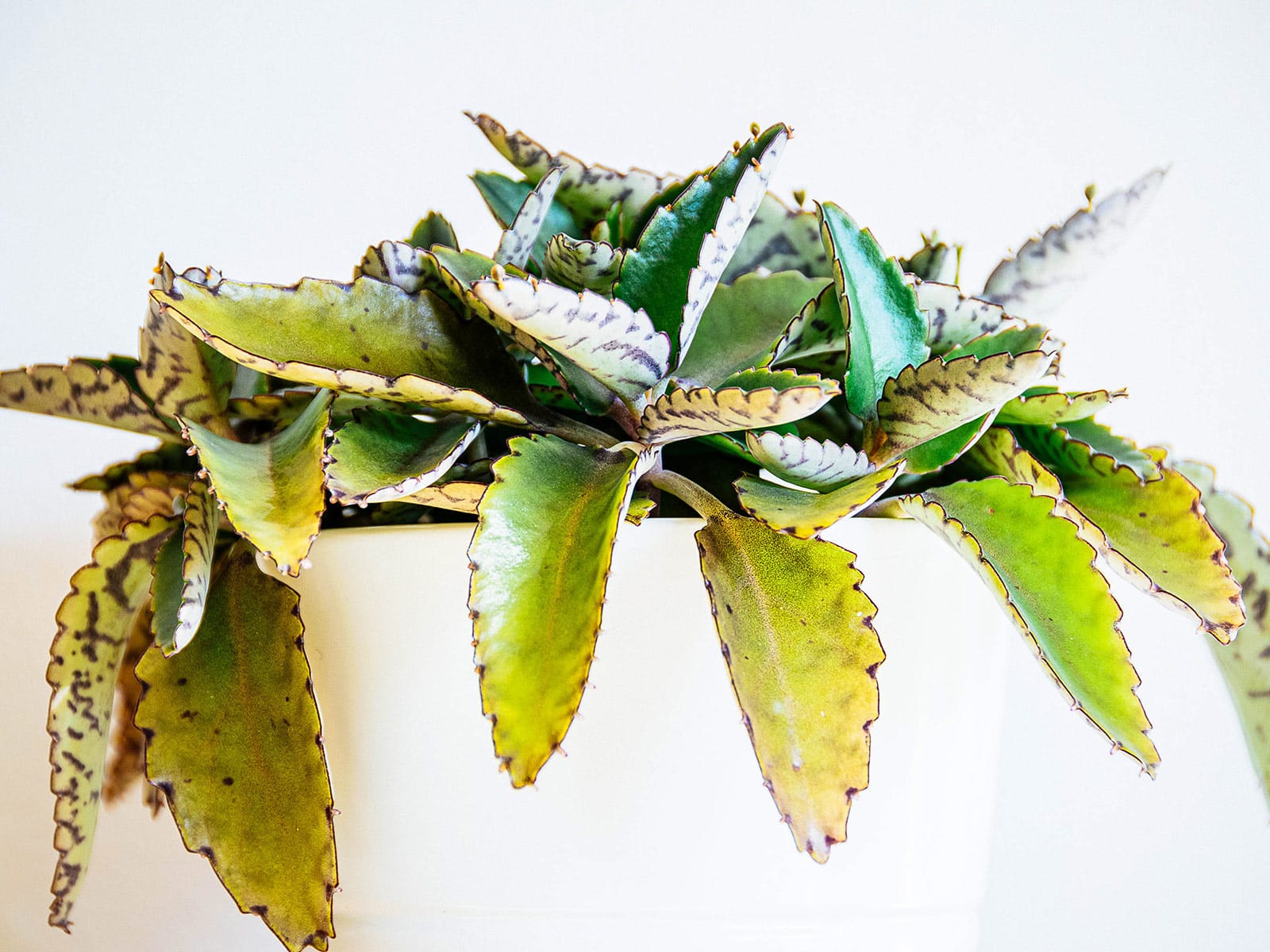
The leaf edges are serrated and, in healthy mature plants, will have a single row of densely packed green to pinkish plantlets on the edges. Some of these baby plants will even have their own root systems!
Although it’s mostly grown for its pretty foliage, the mother of thousands plant does occasionally bloom, and it’s quite a spectacle. The species produces multiple inflorescences (flower stalks) with big umbrellas of lovely dusty pink, bell-shaped flowers.
Where to buy
Mother of thousands vs. mother of millions
It’s a common source of confusion: though sometimes these names are used interchangeably, the mother of thousands plant and mother of millions plant are technically not the same. Both belong to the genus Kalanchoe, but they are, in fact, different plants.
The true mother of thousands plant is scientifically known as Kalanchoe daigremontiana. As mentioned, it’s green in color and has fleshy leaves with dark spots or stripes on the bottom, which are usually dotted with plantlets along the edges.
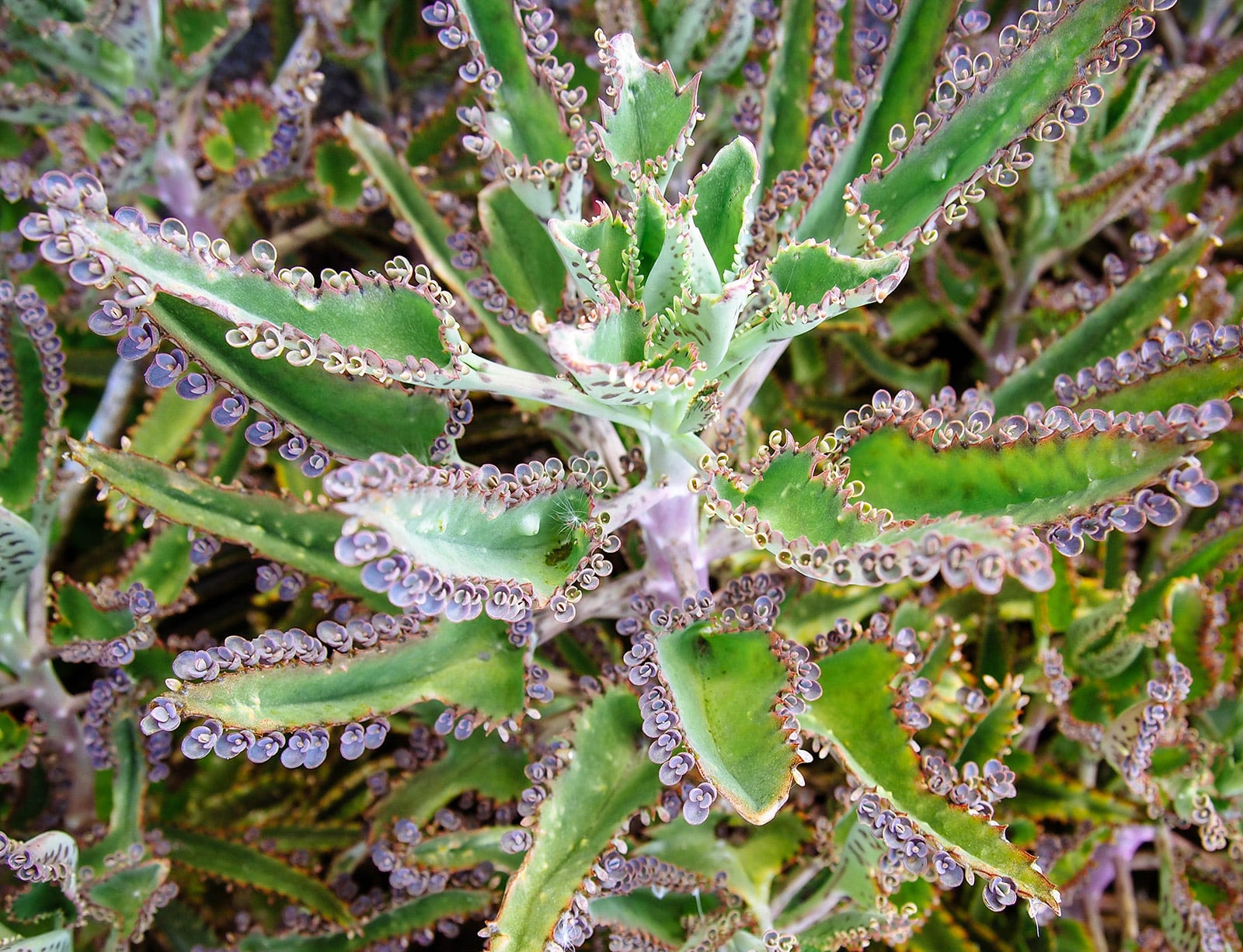
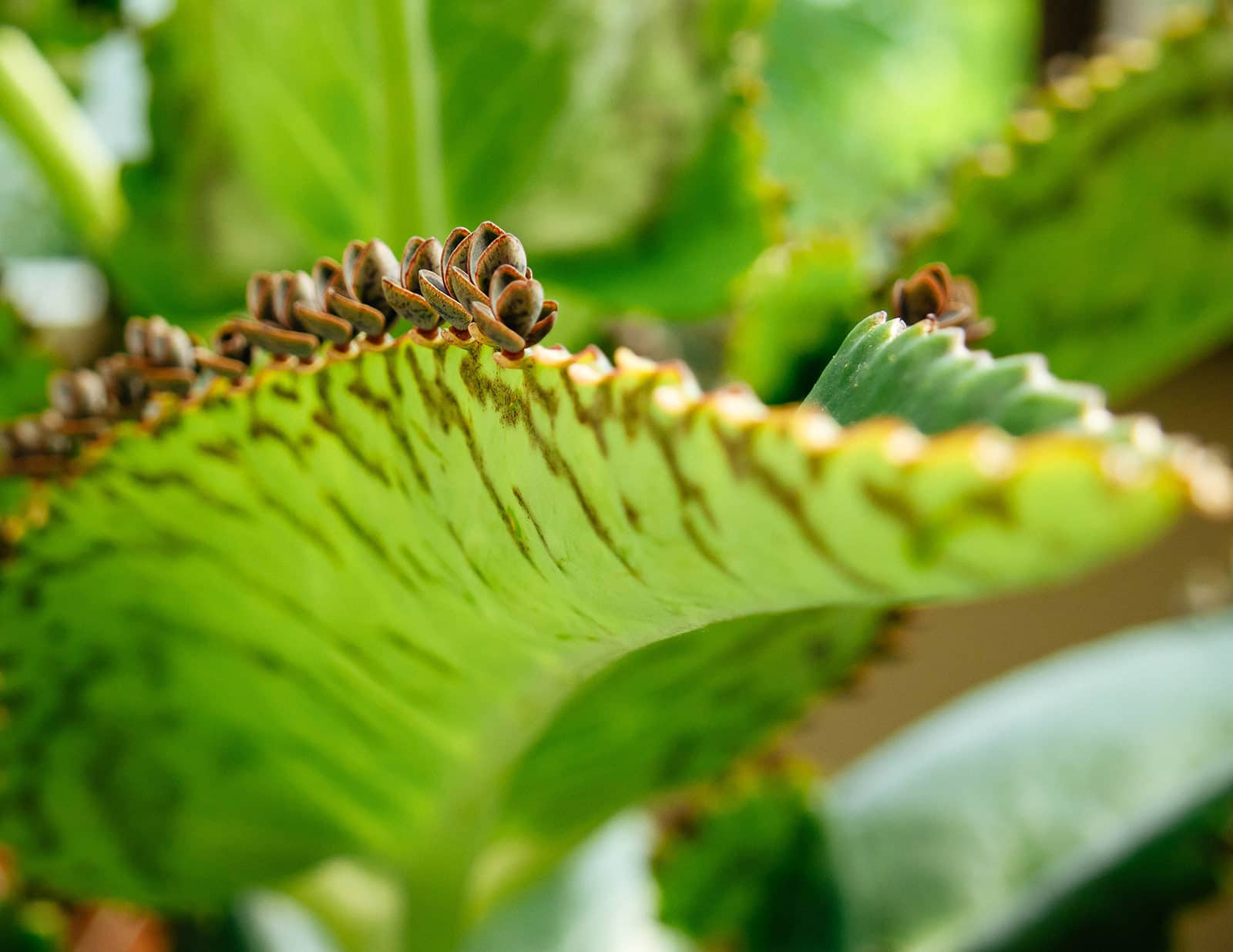
The mother of millions, Kalanchoe delagoensis (formerly Kalanchoe tubiflora) also produces leaf plantlets, but can be differentiated from its cousin by its narrower foliage. The leaves are usually grayish-green with dark “tiger” stripes. It’s sometimes called the chandelier plant.
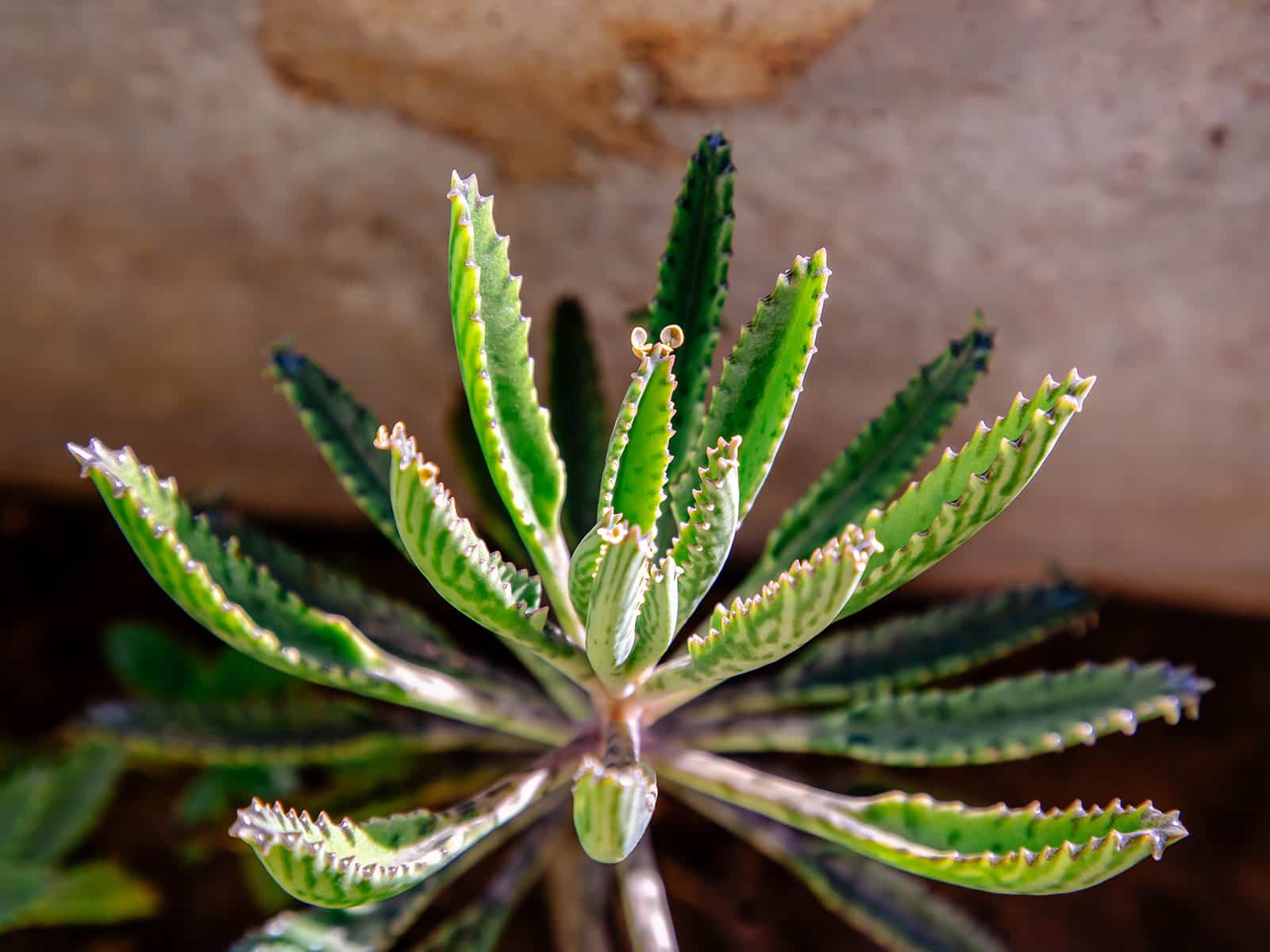
Does it matter which species you get? Not really. Their care requirements are pretty much identical. In fact, they can be crossed to produce hybrids, which are referred to as Kalanchoe × houghtonii. There’s a gorgeous hybrid cultivar called ‘Pink Butterflies’, which produces bright pink plantlets on green leaves.
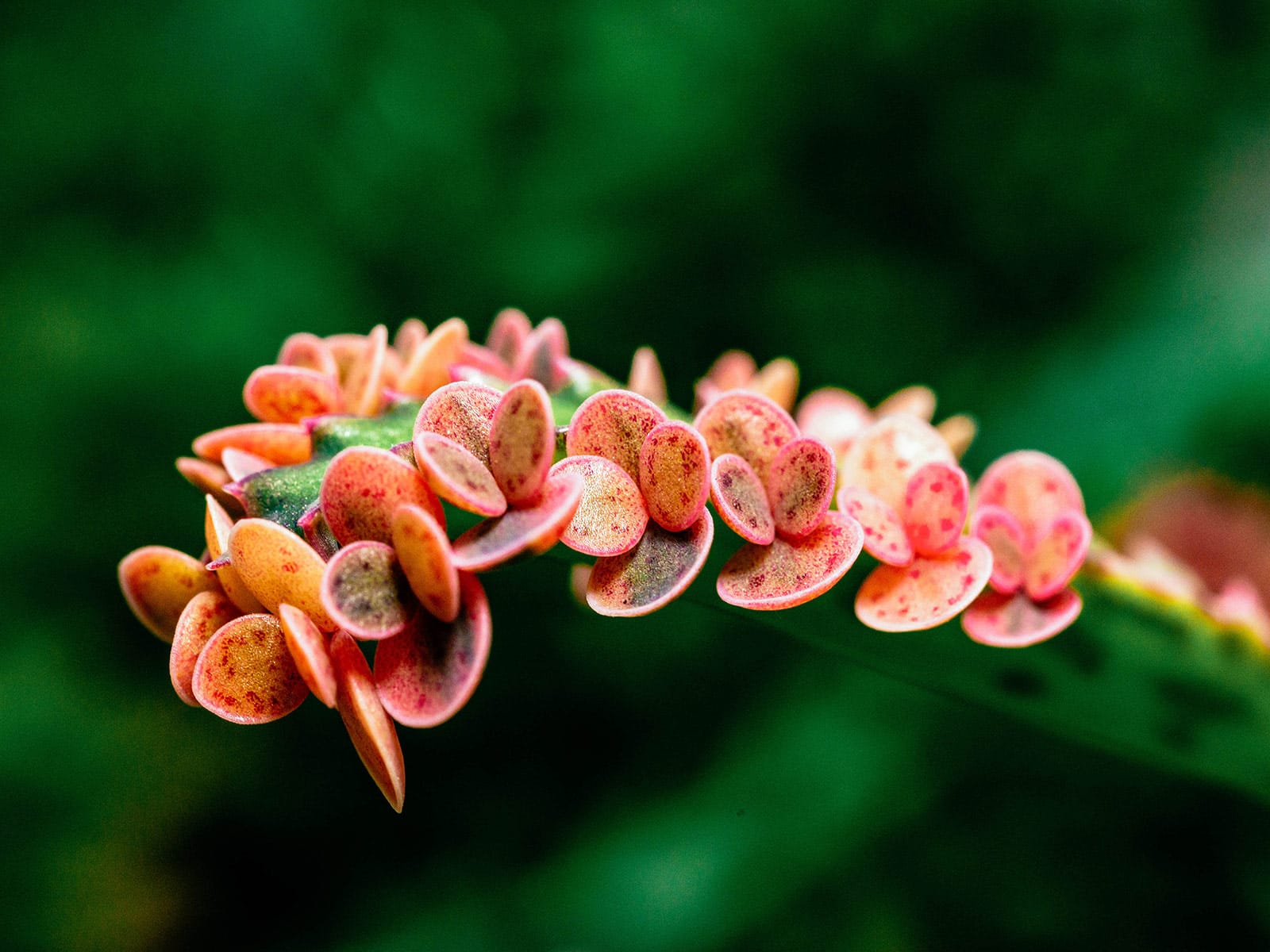
Did you know?
If you stumble upon a similar-looking succulent that has broad, fully green leaves, it’s not a true mother of thousands either. Its name is Kalanchoe × laetivirens, and it’s thought to be a cross between today’s subject and a related species: K. laxiflora. This one, too, has almost identical care requirements. If you own one, you can keep reading!
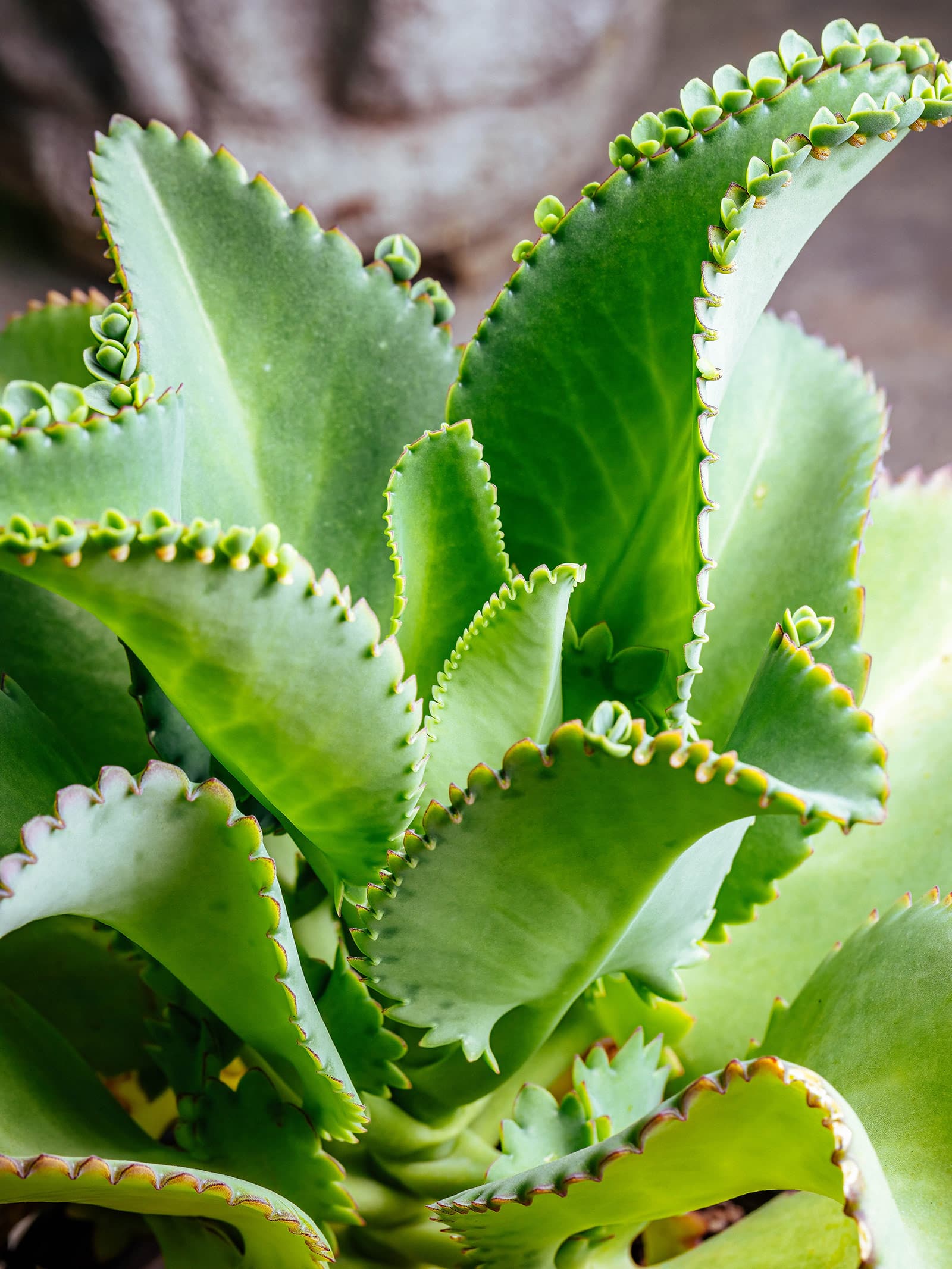
Natural habitat
The mother of thousands plant is naturally found in Madagascar, specifically in the southwestern part of the island. The species is perfectly adapted to life in this arid and mountainous region thanks to its ability to store water in its fleshy leaves.
Its adaptation to harsh habitats, as well as its ability to sprinkle baby plants around its growing area, give Kalanchoe daigremontiana a huge invasive potential. And indeed, it has escaped from gardens all over the world to establish itself in places like the US (Texas, Florida), various Central and South American countries, the Mediterranean, North Africa, and more.
The spread of this succulent to regions outside its natural habitat is considered problematic. It’s such a vigorous grower that it can easily crowd out native plant species. It can regrow from plantlets and small cuttings, which makes it pretty difficult to remove.
Did you know?
In order to thrive in dry regions, Kalanchoe daigremontiana utilizes a mechanism called the Crassulacean acid metabolism. Unlike most other plants, it photosynthesizes during the day, but only exchanges gases at night. This helps prevent water evaporation through the leaves.
Caring for mother of thousands
Light and temperature
You’ve probably guessed it: like other succulents, which thrive in arid habitats that offer little in the way of cover, the mother of thousands plant has evolved to want lots of sun. In your home, you should place yours directly in front of your sunniest window. If you don’t, the plant will grow lanky and sparse over time.
This is also an excellent candidate for growing outdoors during the summer months—or even year-round if you live in a warm climate. Once temps are consistently over 60°F in spring, gradually acclimate your mother of thousands to a sunny spot so it can spend the season enjoying all the light it wants.
In terms of temperature, anything goes as long as you avoid exposing your plant to frost.
Quick Tip
If you grow this species outside in a warm area, for the love of all that’s holy, keep it away from other plant containers and especially garden beds or open areas. Remember, it’s incredibly invasive. It can take over your garden and even “escape” to wreak havoc on the local ecosystem!
Soil and planting
Like its light requirements, the mother of thousand plant’s soil preferences are typical for a succulent. Its roots have evolved to be able to take up moisture quickly and efficiently, but are highly intolerant of prolonged sogginess. Excellent drainage is the key to a happy Kalanchoe.
You can buy pre-mixed succulent soil, but in my experience, most brands still retain a bit too much water. Luckily, making your own is easy as pie, and the result can be used for the majority of succulents and even cacti. I always have a small bin of this ready-made succulent soil sitting around, ready to use whenever I splurge on a new addition to my collection!
Everyone’s got their own favorite “recipe”, but to start with, you can mix 2 parts potting soil with 1 part perlite and 1 part fine orchid bark. This creates a light mixture with lots of air pockets that allows excess water to drain quickly.
As for potting, your mother of thousands won’t care much as long as there’s a drainage hole in the bottom of the container. If you tend to overwater, you can grow your plant in unglazed terracotta, as this material allows moisture to evaporate through its walls.
Recommended
Potting supplies
Water and humidity
The fact that it’s a succulent doesn’t mean the mother of thousands plant doesn’t like water. As long as its soil doesn’t stay wet for extended periods of time, it actually loves it.
You can water yours once the growing medium has gone fully dry, which can be as often as every other day if you grow your plant outdoors during the hot months.
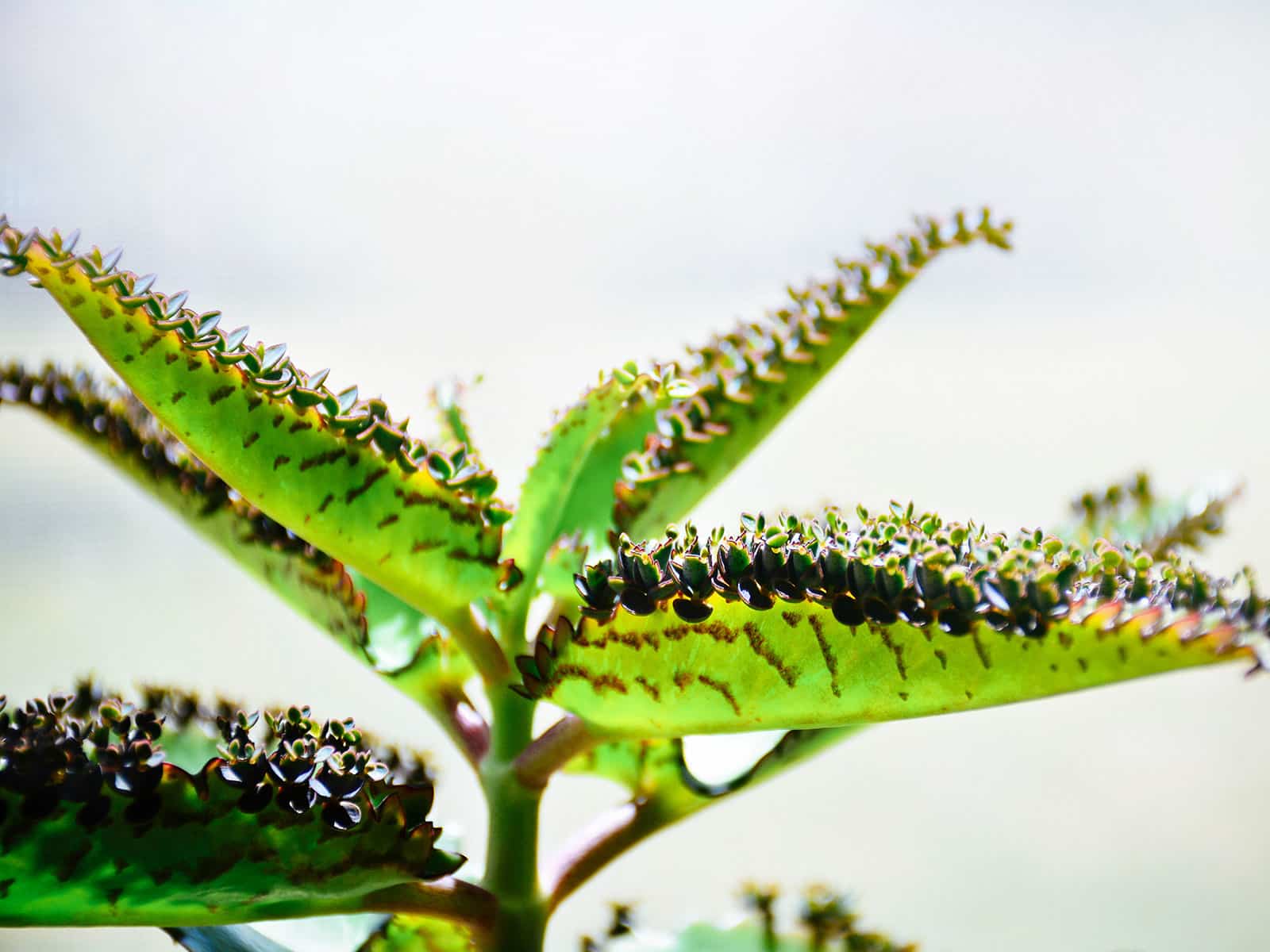
When it’s time to water, don’t just give the plant a little sip. Thoroughly soak the soil until water runs out of the drainage hole in the bottom of the planter. Then, leave things be until it’s completely dry again.
Remember that you may only have to water once or twice a month during the cool winter months!
Humidity is of no concern for a mother of thousands. Although it’s used to growing in low humidity, it will usually do fine in tropical areas with high air moisture levels as well.
Fertilizing
Succulents don’t tend to be heavy feeders. However, a happy mother of thousands plant that gets plenty of light will be a pretty quick grower, so it’ll benefit from the occasional light application of houseplant fertilizer. Every one to two months during the growing season should work well.
As with all plants, don’t use plant food if your mother of thousands is struggling or if it’s gone dormant during winter.
Recommended
Fertilizers
Pruning
Your mother of thousands plant is unlikely to need much in the way of pruning. You can remove flower stalks once they’re dead (they won’t produce any seed). If your plant dropped babies and you don’t want more, you should remove these as well.
Dividing or repotting
A mother of thousands plant is unlikely to produce any soil offshoots, which would normally mean it’s not a good candidate for division. However, as she drops plantlets, the mother plant is likely to eventually become surrounded by her offspring.
If you like the somewhat chaotic look of a bunch of mothers of thousands in the same planter, you can repot them all together once they outgrow their current home (which is likely to be pretty soon with all those root systems competing). Otherwise, you can extract the plantlets to discard or repot separately.
Propagating mother of thousands
You probably won’t be surprised to hear that the mother of thousands plant is a breeze to propagate (it’s kind of in the name). If your plant hasn’t managed to spread to neighboring containers all by itself yet and you’d like to multiply it, there are a bunch of different ways to do so.
Funny enough, according to research, you can’t grow this succulent from seed. Although it does bloom, it’s not able to produce viable seeds without the use of hormones by growers.
It reproduces asexually, relying on the plantlets that form along its leaf edges. A special gene allows it to produce fully functional baby plants on its foliage, something not commonly seen in plants.
Okay, so the plant produces baby versions of itself, by itself. How do you use these to expand your collection? It’s easy!
In many cases, more mature plantlets will actually already have their own root systems. All you have to do is gently place them on some suitable soil and keep them lightly moist. They’ll continue developing and eventually grow as large as the mother plant.

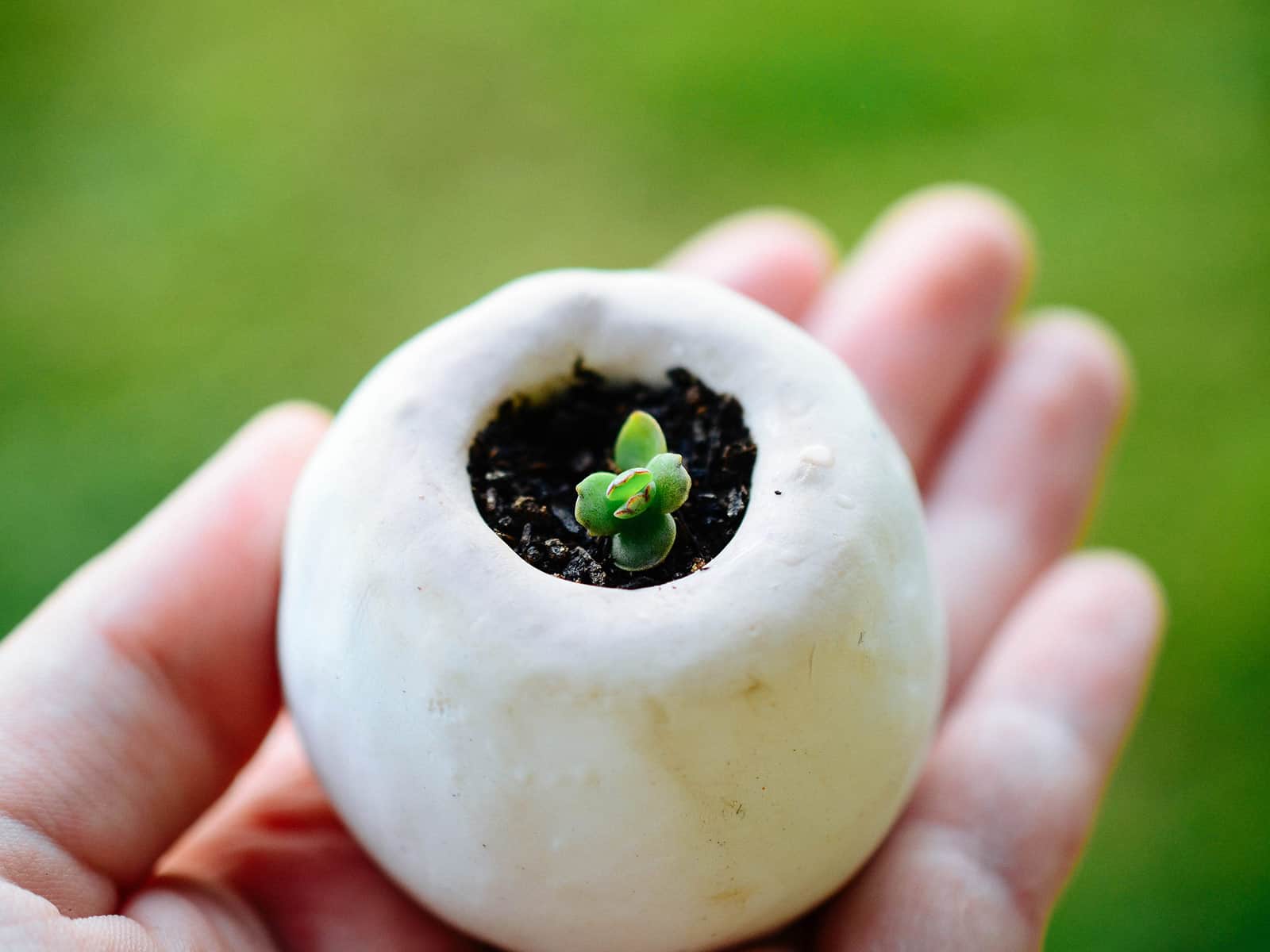
Frequently asked questions
Sources
- https://powo.science.kew.org/taxon/urn:lsid:ipni.org:names:274315-1
- Garcês, H., & Sinha, N. (2009). The ‘mother of thousands’(Kalanchoë daigremontiana): A plant model for asexual reproduction and CAM studies. Cold Spring Harbor Protocols, 2009(10), pdb-emo133.
- Von Caemmerer, S., & Griffiths, H. (2009). Stomatal responses to CO2 during a diel Crassulacean acid metabolism cycle in Kalanchoe daigremontiana and Kalanchoe pinnata. Plant, Cell & Environment, 32(5), 567-576.
- Williams, M. C., & Smith, M. C. (1984). Toxicity of Kalanchoe spp to chicks. American journal of veterinary research, 45(3), 543-546.


